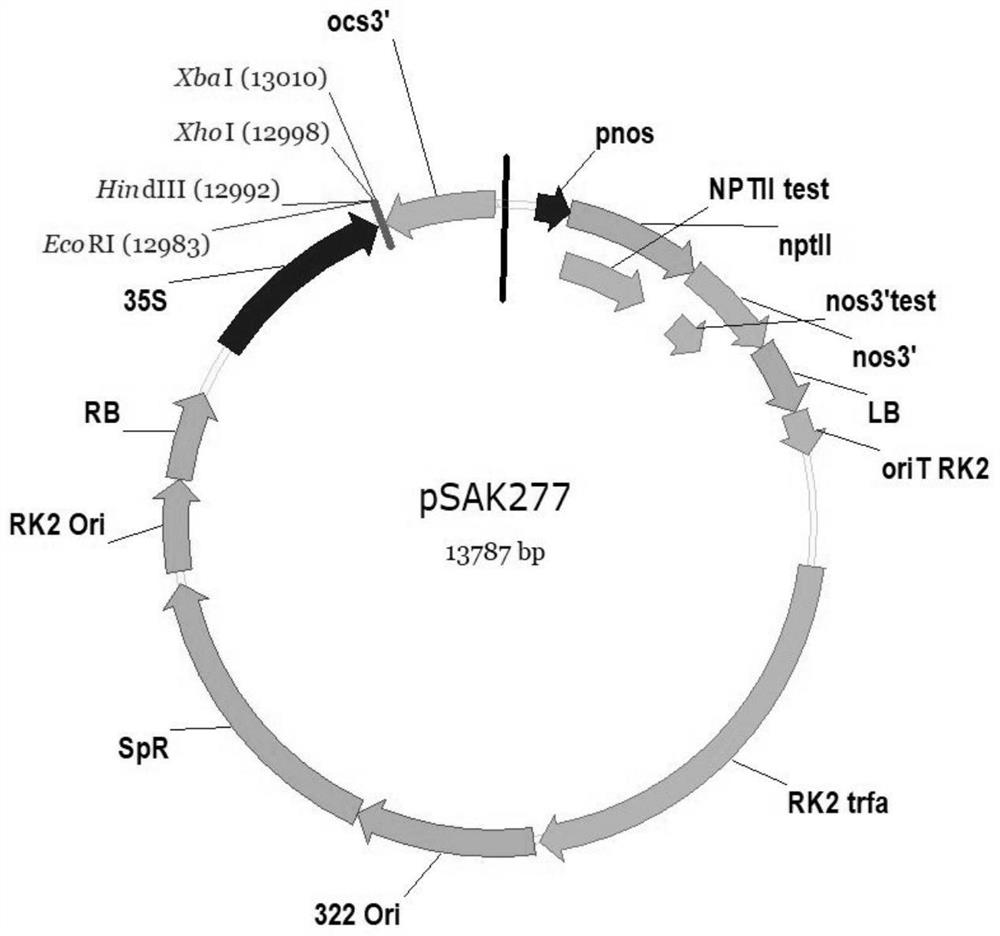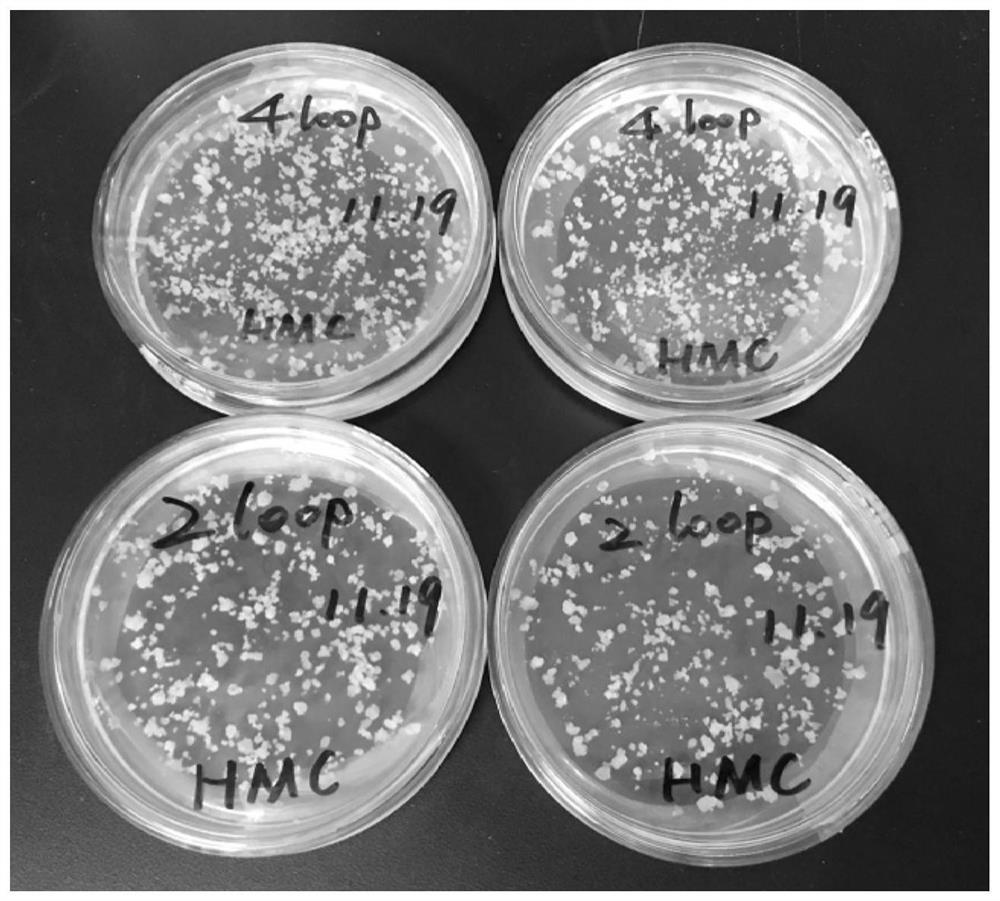Agrobacterium-mediated peach genetic transformation method
A genetic transformation method, Agrobacterium-mediated technology, applied in the field of genetic engineering of horticultural crops, can solve the problems of not meeting current needs and low transformation efficiency
- Summary
- Abstract
- Description
- Claims
- Application Information
AI Technical Summary
Problems solved by technology
Method used
Image
Examples
Embodiment 1
[0037] A kind of Agrobacterium-mediated peach genetic transformation method of the present embodiment comprises the following steps:
[0038] (1) Establishment of genetically transformed receptors
[0039] From March to April, the hypocotyls of peach new shoots were cut from the field as explants, and inoculated on the surface of the callus induction medium; the induced callus was subcultured 4 times, such as figure 1 As shown, it can be used as a genetic transformation recipient.
[0040] Among them, the formula of callus induction medium is: MS+1.5mg / L 6-BA+0.4mg / L IBA+20g / L sucrose+7g / L agar+0.5g / L MES, pH 5.7; The conditions for tissue growth are: 16h light, 8h dark photoperiod, light intensity 1750lx, temperature 25°C, sterile.
[0041] (2) The cultivation of Agrobacterium and the configuration of the infection solution
[0042] The pSAK277-GUS plasmid was transformed with Agrobacterium GV3101 to obtain the Agrobacterium GV3101 carrying the pSAK277-GUS plasmid. Among ...
Embodiment 2
[0058] A kind of Agrobacterium-mediated peach genetic transformation method of the present embodiment comprises the following steps:
[0059] (1) Establishment of genetically transformed receptors
[0060] From March to April, the hypocotyls of peach new shoots were cut from the field as explants, and inoculated on the surface of callus induction medium; the induced callus can be used as a genetically transformed recipient after three subcultures. body.
[0061] Among them, the formula of callus induction medium is: MS+1.0mg / L 6-BA+0.2mg / L IBA+20g / L sucrose+6g / L agar+0.5g / L MES, pH 5.6; The conditions for tissue growth are: 16h light, 8h dark photoperiod, light intensity 1500lx, temperature 25°C, sterile.
[0062] (2) The cultivation of Agrobacterium and the configuration of the infection solution
[0063] The pSAK277-GUS plasmid was transformed with Agrobacterium GV3101 to obtain the Agrobacterium GV3101 carrying the pSAK277-GUS plasmid. Among them, the construction map o...
Embodiment 3
[0079] A kind of Agrobacterium-mediated peach genetic transformation method of the present embodiment comprises the following steps:
[0080] (1) Establishment of genetically transformed receptors
[0081] From March to April, the hypocotyls of peach new shoots were cut from the field as explants, and inoculated on the surface of callus induction medium; the induced callus can be used as a genetic transformation recipient after 5 subcultures. body.
[0082] Among them, the formula of callus induction medium is: MS+2.0mg / L 6-BA+0.6mg / L IBA+20g / L sucrose+8g / L agar+0.5g / L MES, pH 5.8; The conditions for tissue growth are: 16h light, 8h dark photoperiod, light intensity 2000lx, temperature 25°C, sterile.
[0083] (2) The cultivation of Agrobacterium and the configuration of the infection solution
[0084] The pSAK277-GUS plasmid was transformed with Agrobacterium GV3101 to obtain the Agrobacterium GV3101 carrying the pSAK277-GUS plasmid. Among them, the construction map of the...
PUM
 Login to View More
Login to View More Abstract
Description
Claims
Application Information
 Login to View More
Login to View More - R&D
- Intellectual Property
- Life Sciences
- Materials
- Tech Scout
- Unparalleled Data Quality
- Higher Quality Content
- 60% Fewer Hallucinations
Browse by: Latest US Patents, China's latest patents, Technical Efficacy Thesaurus, Application Domain, Technology Topic, Popular Technical Reports.
© 2025 PatSnap. All rights reserved.Legal|Privacy policy|Modern Slavery Act Transparency Statement|Sitemap|About US| Contact US: help@patsnap.com



